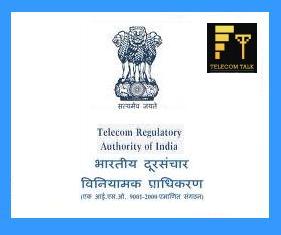 In order to further improve transparency in telecom tariff offers, India's telecom watchdog Telecom Regulatory Authority of India (TRAI) has today issued a Direction to all Telecom / Mobile service providers on preventing 'misleading tariff' advertisements.
In order to further improve transparency in telecom tariff offers, India's telecom watchdog Telecom Regulatory Authority of India (TRAI) has today issued a Direction to all Telecom / Mobile service providers on preventing 'misleading tariff' advertisements.
TRAI said that every advertisement published by mobile/telecom service providers must be transparent and non-misleading and the design, including paper size, color, font type and font size, tone and volume of the advertisement is legible, audible and unambiguous.
TRAI Illustrated some of the misleading advertisements by Mobile /Telecom service operators as follows :
(i) Advertising a particular call rate as ‘Per Second’ or ‘Per Minute’ would be misleading in cases where the pulse rate is higher than ‘One Second’ or ‘One Minute’. Thus, declaration of call rate as ‘½ paisa or ¼ paisa per second’ would mislead if the actual rate is 1 paisa per two seconds or 1 paisa per four seconds. Similarly, to present a call rate as ‘40 paise per minute’, would be misleading if the actual call rate is Rs.1.20 per 3 minutes.
(ii) Advertising a reduced call rate as invitational call rate would be misleading, if it involves a ‘start-up charge’ or call set-up charge’ in addition to the declared rate or if the first minute usage attracts a higher charge than the stated rate. For example, presenting the call rate ‘@ 29 paise per minute’ in situations where there is a call set-up charge of 39 paise would be misleading because the first minute usage would attract 68 paise and not the declared 29 paise per minute.
(iii) Advertisement of a specific reduced call rate/SMS charge would be misleading if it does not indicate that such reduced rate is applicable only after some usage. For example, ‘1 paisa per SMS’, would be misleading if 1 paisa per SMS becomes applicable only after the first SMS which is charged at the base rate/higher rate.
(iv) Advertising or presenting a tariff plan under a title which suggests absence of rental would be misleading if the tariff plan has recurring mandatory fixed charge in one form or other. Tariff plans with titles ‘Zero Rental’, ‘Rental Free’ etc. come under this category.
(v) Advertising a specific call rate or SMS charge would be misleading if such rates are applicable to only on-network usage and such vital restrictions are not conveyed explicitly in the advertisement. For example, ‘Call @ 50 Paise Per Minute’ without mentioning that the rate is applicable only for calls within the network of the service provider, would be misleading.
(vi) Advertising the titles of the tariff plans or other packages/schemes, which suggest unlimited usage, will be treated as misleading in situations where the features of such plan/scheme package put restrictions on the quantum of usage in any manner including by way of Fair Usage Policy etc. on the usage. Thus, a plan advertised, as ‘unlimited free calls’ would mislead if there is daily limit or ceiling on the total minute of usage either by way of fair usage policy or otherwise. For a common man the term 'Unlimited' would only mean without any limit whatsoever.
(vii) Advertising a discounted call rate/SMS charge would be misleading if such discounted rate is applicable only during specific duration of time/ period. For example, ‘Call @ 10 Paise’ in situations where this rate is valid for off-peak /night, would be misleading.
(viii) Advertising a tariff plan as ‘Per Second Plan’, if the per second based tariff is valid for some particular duration only. For example, plans with per second billing for initial one year after which the subscribers would be moved to the base per minute bill plan.
(ix) Advertising a discounted rate without mentioning the fixed fee component to be paid by the subscriber for availing such discounted rate would be misleading in situations where such conditions are not explicitly stated in the advertisement. For example, ‘call @ 30 paise per minute for six months’, would be a misleading advertisement if a recurring fixed charge is compulsory to avail the benefit.
(x) Advertising a scheme/pack as ‘Free’ would be misleading if there is a cap on the daily usage and such cap is not conveyed in the advertisement.
(xi) Advertising a specific discounted STD/ISD as general rate would bemisleading if such STD/ISD rates are applicable only in respect of calls to specific regions/countries. For example, ‘STD calls @ 40 paisa per minute’, if the rates are applicable only for southern states. Similarly,a ‘gulf-pack offering ISD calls at Rs.2, but the rates are only valid for UAE would be misleading if the factual position is not clearly conveyed in the Advertisement.
(xii) Advertisement that omits certain vital terms and conditions attached to a set of tariff such as the ‘validity period’ would be misleading in situations where such declared tariff benefit is available only for a specific period. For example, ‘for Rs.20 make all local calls at 10 paise per minute and STD at 20 paise per minute’, in situations where the validity of the said concessional offer is limited to a period of 5 days only and this fact is not clearly reflected in the advertisement.
Do let us know if you like or dislike this new directives by TRAI , will this help the customers in better transparency ? Do share your views via comments.















